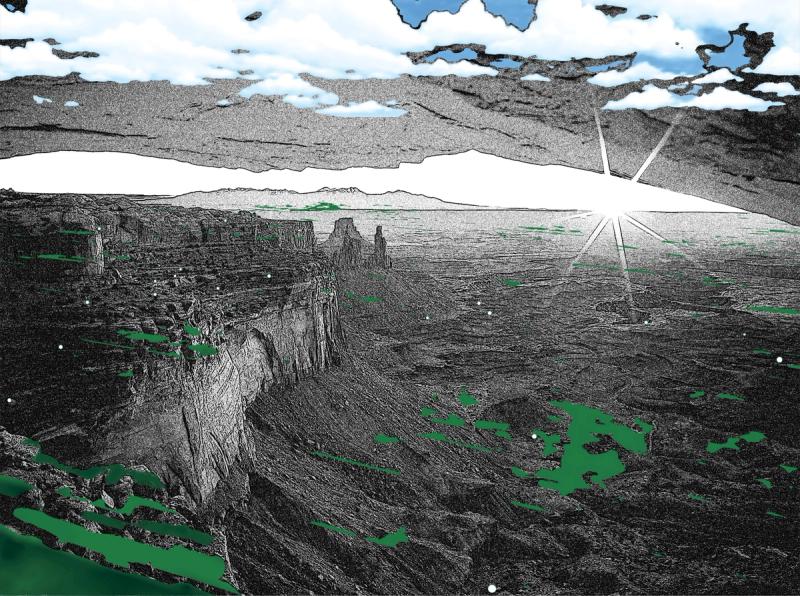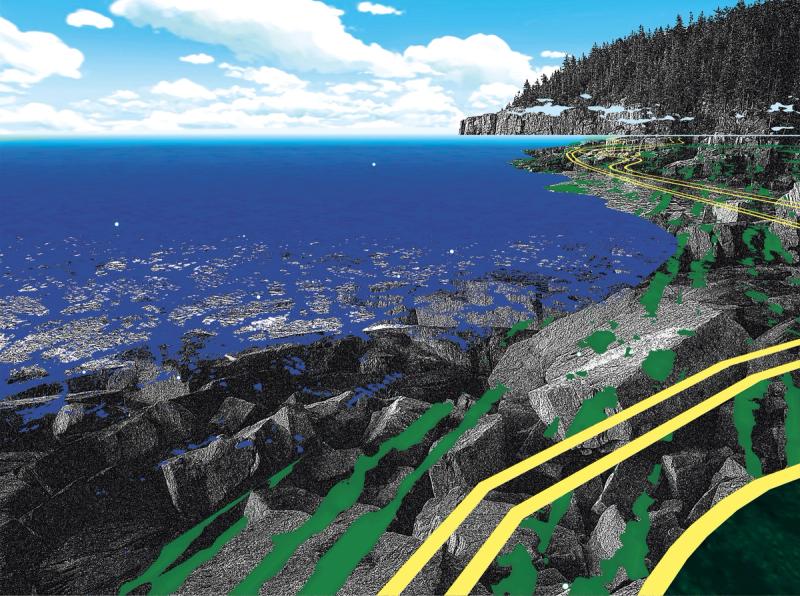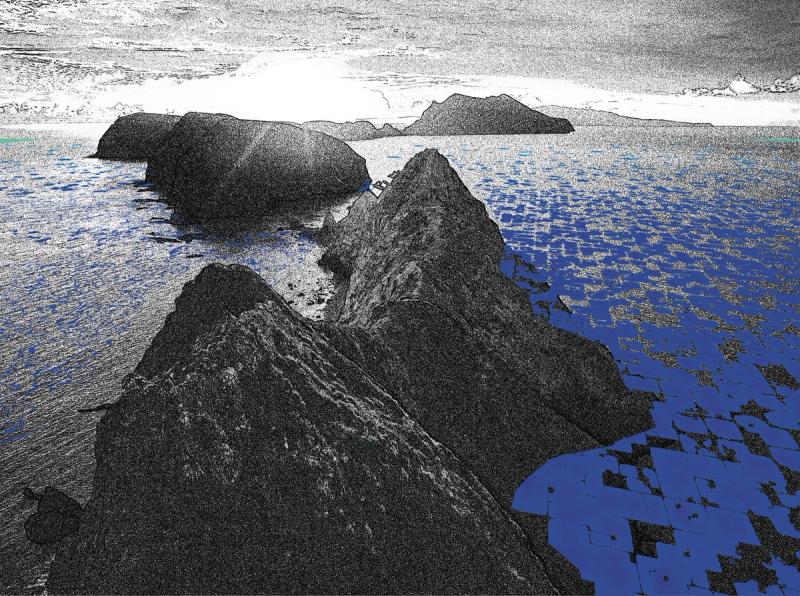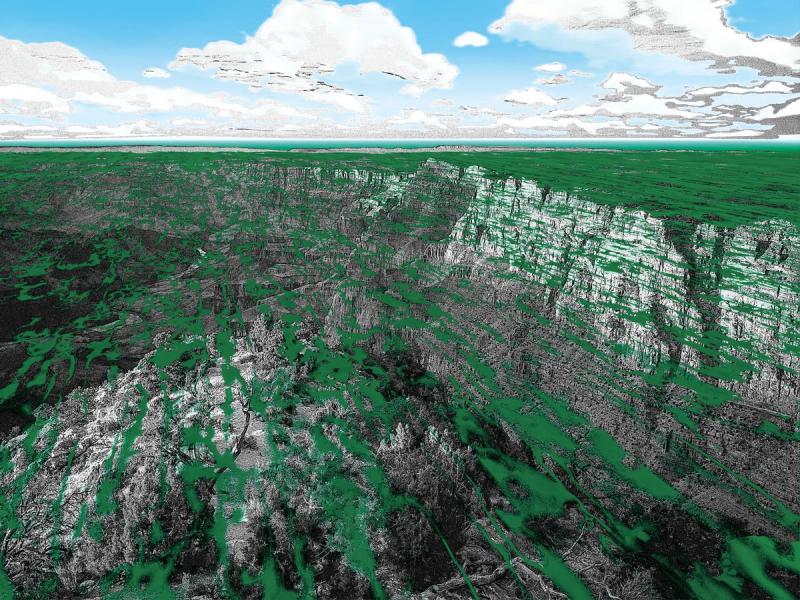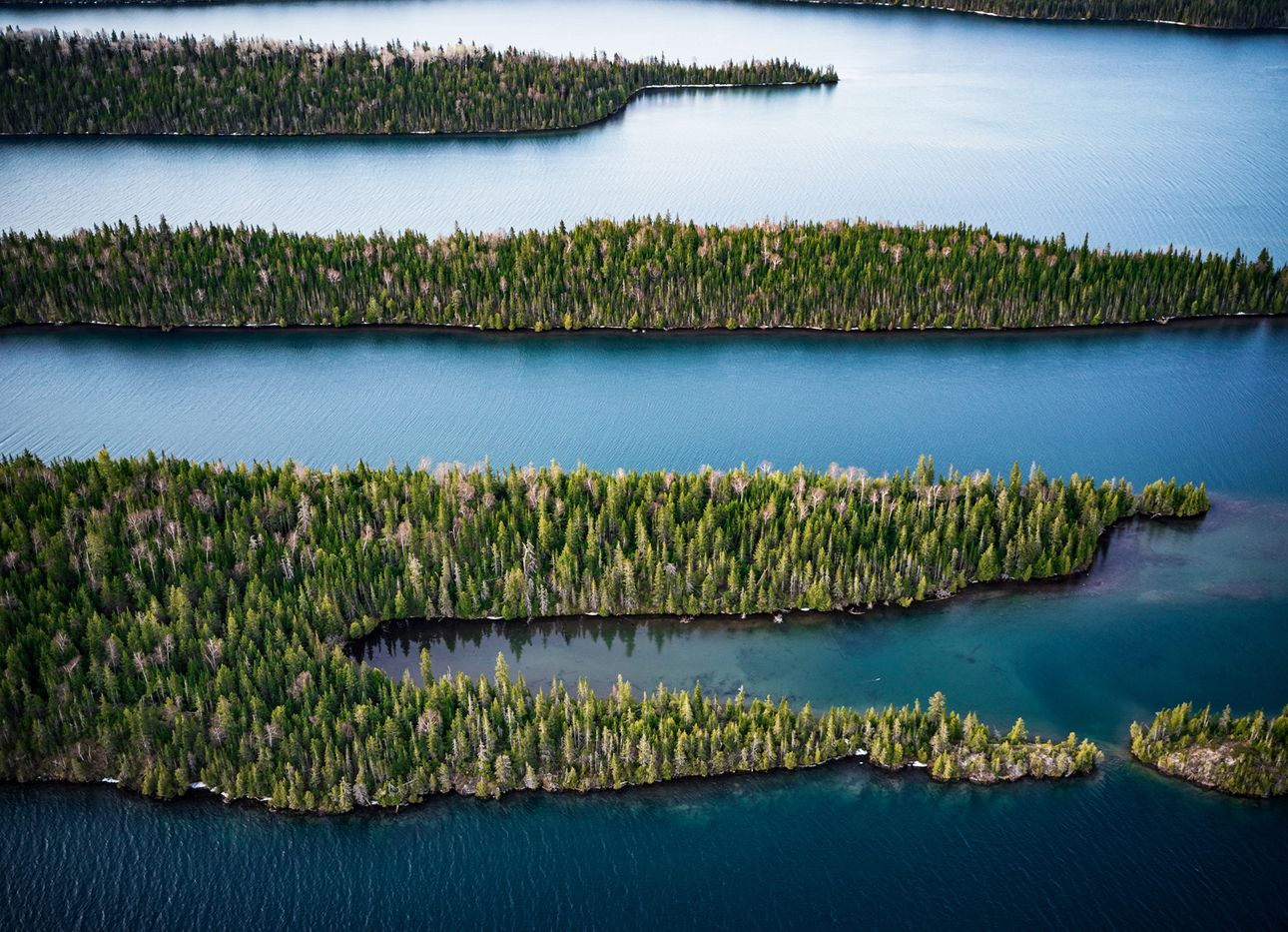
An Exhibition Ponders Technology’s Grip on Human “Reality”
In 2016, a stampede of people flooded the streets of Taipei, stopping garbage trucks and buses in the wake of their single-minded pursuit. What unified so many to disrupt the rhythms of everyday life couldn’t be seen by anyone outside of the crowd, because it wasn’t anywhere “outside” for them to see. The answer rested in the smart devices of the procession’s members, leading them on through the popular Pokémon Go app, a game that—this should seem obvious now that we’re in 2022—lets users look at an augmented world through their phone’s camera, overlaying reality with virtual Pokémon to be discovered (in the case of the Taipei crowd, an ultra-rare Snorlax).
For most, this was an amusing, if inconveniencing, incident. For artist, author, and lecturer John Mack, the video footage of the occurrence was unsettling. “What hit me was, well, first of all, it was slapstick comedy,” Mack says, “and then, a sort of grave concern hit me, because I saw this mass migration of people moving from the natural world to the digital world. And there was something analogous running there with the human chase for illusory constructs.”
The Taipei event crystallized for him the way that technology has amplified the human impulse to live in the concepts we create rather than in the world as it is. It also gave him the impetus to launch the Life Calling Initiative, a not-for-profit geared toward creating greater understanding around the intersection of new technology and human behavior; organize the free upcoming exhibition “A Species Between Worlds” (Sept. 1–30) in New York’s Chelsea neighborhood; and write a related book of poetry, A Land Between Worlds (Powerhouse Books), out September 6.
Consisting of more than 65 artworks that combine photography of U.S. National Parks and the Seven Wonders of the Natural World with the sorts of corresponding digital landscapes one would find on the Pokémon Go app, “A Species Between Worlds” invites viewers to pause and consider the implications of our various realities and “worlds.” Accompanying the artworks, appropriately, is a virtual reality app of the exhibit’s own. Using it, a visitor looking through their selfie cameras will see themself projected onto the landscapes on display with a digital avatar over their body. As the Pokémon Go facade gradually dissolves from piece to piece, so does the avatar on the patron’s camera, till finally the image of both the viewer and subject become fully unobscured.
As Mack is quick to clarify, the exhibition is not meant to be specifically about technology, or for or against it. “This is not a commentary on technology,” he says. “This is a commentary on human discipline and responsibility. One’s relationship to technology, one’s relationship to anything, can only be as good as one’s relationship to themselves.” As he views it, the tools we’ve developed to navigate the world have turned into something we’ve fallen into, letting us avoid acknowledging the world on its own terms in favor of losing ourselves in the constructs we impose upon it. The natural imagery that features throughout the gallery is reflective of the natural state Mack believes people desperately need to reconnect with, both in the world and in themselves.
During the month-long run of the show, guests including Sapiens author Yuval Noah Harari, Facebook whistleblower Frances Haugen, and Monica Lewinsky will speak on the effects of our ever-growing digital lives. To Mack, bolstering the conversation around the harmful ways we use technology is critical to holding accountable the companies that encourage it. He sees an instructive parallel to discussions around climate change and how it’s pressuring companies to shift practices and “go green.” “It would be wonderful,” he says, “if we could get this issue to such a global awareness that if, say, a company ‘went blue,’ the tech company is then working for the greater good of the community, they are not exploiting our inner nature for their own wishes.”
While the possibility of Big Tech corporations taking the existential health of consumers seriously may seem far-fetched, the reflections and conversations Mack hopes to inspire with “A Species Between Worlds” offers, at the very least, a small step forward, a reminder to care about the unmediated life that we stand to lose if we forget that it’s out there at all.
